Real eState
What Will Real Estate Look Like In 2021? 3 Homebuying Trends You’ll See This Year – Forbes


Chances are, you or someone you know has bought or sold a house in the last 10 months. No matter if you are moving across the street or across the country, it’s all part of a record-setting real estate boom.
The Covid-19 pandemic has affected every industry, but perhaps none as surprisingly as real estate. Triggered by job and financial changes, the push to stay at home and low interest rates, a record number of people have bought homes during the pandemic, even as a recession lingers and unemployment rates remain high. And the trend will continue throughout 2021.
The real estate boom is far from over. Here are three key homebuying trends to look for in 2021.
Record-Setting Pace
Homes aren’t just selling, they’re selling at a record-setting pace. The Covid-fueled real estate boost caused an average of 42% of home listings nationwide to sell in two weeks or less. One survey found that more than half of homebuyers say the pandemic accelerated their homebuying process. In the competitive San Diego market, 55% of homes are off the market in less than weeks, with an average of just 20 days on the market.
The record-setting pace is good news for sellers but makes for a difficult experience for buyers. In many cases, potential buyers are outpriced in the competitive market or forced to make rush decisions.
However, the record-setting pace could start to slow slightly during 2021. Houses were flying off the market because of a supply shortage and an increase in demand, largely due to a spring freeze in buying, paired with low interest rates and changing job situations. But as supply and demand start to balance out as the year progresses, look for the competitive seller’s market to slow down, but not by much.
In 2021, Zillow expects 6.9 million existing home sales, which is the most since 2005. The projected 21.9% one-year gain in sales is the largest since the early 1980s. An increasing number of millennials are buying houses, and with Gen Z closing in on prime homebuying age, the market demand should hold steady throughout 2021 and into the future.
Perhaps good news for buyers is that 2021 won’t be such a steady rush. Due to the pandemic, typical homebuying seasons went out the window in 2020, creating a free for all. But as things return to a new type of normal in 2021, look for homebuying seasons to return, with a surge of buyers in the spring and summer months and things cooling down towards winter.
Changed Budgets, Higher Prices
The homebuying surge comes in the middle of financial strain and high unemployment numbers. So although many people are buying homes, they aren’t always stretching their budgets. Research found 63% of homebuyers were forced to lower their budget by an average
of $28,400 due to the pandemic. At the same time, 65% of buyers backed out of buying a home, most often due to budget.
When paired with record-low interest rates, lower budgets can still get buyers more home than they could have bought a year ago. Interest rates are likely to stay low throughout 2021 but will start to increase in the second half of the year. Buyers or people who were thinking of buying within the next few years are now speeding up their timelines to make their money go further.
Lowered budgets are changing what some homebuyers are looking for, leading to growth in less expensive regions. In some cases, buyers with lowered budgets are shopping for homes below their price range in hopes of being able to put in an above-list price offer.
Although individuals are lowering their personal budgets, the markets as a whole are increasing. A rise in demand is actually raising home prices. Nearly one in four buyers who purchased between April and June 2020 paid $500,000 or more, an increase from 14% of buyers in the preceding nine months. Experts predict that home prices will increase 5.7% in 2021 to reach new heights.
Leaving Cities And High-Tax Areas
The move to remote working has pushed people out of cities and led to an increase in homebuying in the suburbs. Suburban areas have seen higher home sales growth than urban areas, and many homebuyers have increased their willingness to commute when they return to work in the office.
In the suburbs, homebuyers are more likely to find traits that are increasingly desirable: larger houses for more time spent at home, dedicated office space and personal outdoor space, as well as proximity to beaches, trails and open space.
The top 10 most competitive real estate markets during the pandemic are Seattle, Omaha, Lexington, Denver, Indianapolis, Portland, Oklahoma City, Sacramento, Oakland and Tulsa. These areas will continue to thrive in 2021, especially in their suburban areas.
Aside from leaving urban centers, many people are leaving high-tax areas. Some of the world’s richest people, including Elon Musk, who recently overtook Jeff Bezos as the richest person in the world, are leaving high-tax areas like California in favor of lower taxes. Musk moved himself and the headquarters of SpaceX from California, the state with the highest income tax, to Texas, a state with no income tax. Joining the ranks include Splunk CEO Doug Merritt, who also moved to Texas, Oracle co-founder Larry Ellison, who relocated to Hawaii and even Tom Brady, who recently bought a Miami mansion.
The effects of the ultra-rich leaving high-tax areas will be felt throughout their cities. Others may follow in their footsteps to take advantage of lower taxes, especially as remote work opens up the potential to work from anywhere, and finances are tight for many people.
What will real estate look like in 2021? In most cases, a continuation of the incredible growth of 2020. Even during a pandemic and recession, homes will continue to sell at a breakneck pace.
Blake Morgan is a customer experience futurist, keynote speaker and the author of the bestselling book The Customer Of The Future. Sign up for her weekly newsletter here.
Real eState
Judge Approves $418 Million Settlement That Will Change Real Estate Commissions
|
|


A settlement that will rewrite the way many real estate agents are paid in the United States has received preliminary approval from a federal judge.
On Tuesday morning, Judge Stephen R. Bough, a United States district judge, signed off on an agreement between the National Association of Realtors and home sellers who sued the real estate trade group over its longstanding rules on commissions to agents that they say forced them to pay excessive fees.
The agreement is still subject to a hearing for final court approval, which is expected to be held on Nov. 22. But that hearing is largely a formality, and Judge Bough’s action in U.S. District Court for the Western District of Missouri now paves the way for N.A.R. to begin implementing the sweeping rule changes required by the deal. The changes will likely go into full effect among brokerages across the country by Sept. 16.
N.A.R., in a statement from spokesman Mantill Williams, welcomed the settlement’s preliminary approval.
“It has always been N.A.R.’s goal to resolve this litigation in a way that preserves consumer choice and protects our members to the greatest extent possible,” he said in an email. “There are strong grounds for the court to approve this settlement because it is in the best interests of all parties and class members.”
N.A.R. reached the agreement in March to settle the lawsuit, and a series of similar claims, by making the changes and paying $418 million in damages. Months earlier, in October, a jury had reached a verdict that would have required the organization to pay at least $1.8 billion in damages, agreeing with homeowners who argued that N.A.R.’s rules on agent commissions forced them to pay excessive fees when they sold their property.
The group, which is based in Chicago and has 1.5 million members, has wielded immense influence over the real estate industry for more than a century. But home sellers in Missouri, whose lawsuit against N.A.R. and several brokerages was followed by multiple copycat claims, successfully argued that the group’s rule that a seller’s agent must make an offer of commission to a buyer’s agent led to inflated fees, and that another rule requiring agents to list homes on databases controlled by N.A.R. affiliates stifled competition.
By mandating that commission be split between agents for the seller and buyer, N.A.R., and brokerages who required their agents to be members of N.A.R., violated antitrust laws, according to the lawsuits. Such rules led to an industrywide standard commission that hovers near 6 percent, the lawsuits said. Now, agents will be essentially blocked from making those commission offers, a shift that will, some industry analysts say, lower commissions across the board and eventually force down home prices as a result.
Real estate agents are bracing for pain.
“We are concerned for buyers and potentially how we will get paid for working with buyers moving forward,” said Karen Pagel Guerndt, a Realtor in Duluth, Minn. “There’s a lot of ambiguity.”
The preliminary approval of the settlement comes as the Justice Department reopens its own investigation into the trade group. Earlier this month, the U.S. Court of Appeals for the District of Columbia overturned a lower-court ruling from 2023 that had quashed the Justice Department’s request for information from N.A.R. about broker commissions and how real estate listings are marketed. They now have the green light to scrutinize those fees and other N.A.R. rules that have long confounded consumers.
“This is the first step in bringing about the long awaited change,” said Michael Ketchmark, the lawyer who represented the home sellers in the main lawsuit. “Later this summer, N.A.R. will begin changing the way that homes are bought and sold in our country and this will eventually lead to billions of dollars and savings for homeowners.”
Under the settlement, homeowners who sold homes in the last seven years could be eligible for a small piece of a consolidated class-action payout. Depending on how many homeowners file claims by the deadline of May 9, 2025, that could mean tens of millions of Americans.





Real eState
Two matching megacomplexes to totally transform Toronto neighbourhood
|
|
A pair of twinned proposals aim to completely redefine the skyline of Toronto’s midtown area with an architectural statement that would set the neighbourhood apart from other high-rise clusters in the city.
Two separate proposals from developer Madison Group at 110 and 150 Eglinton Avenue East have been resubmitted to city planners, calling for two pairs of mixed-use condominium towers with standout designs unlike anything that exists in the city today.
In a surprising twist from a developer not exactly known for breaking the bank on architecture, the proposals now boast brand-new complementary designs from acclaimed firm Rafael Viñoly Architects.
The 110 Eglinton site, currently home to a pair of mid-rise office buildings, would be demolished and built out with two 58-storey towers.
A few doors to the east, the 150 Eglinton site includes a handful of mid-rise and low-rise commercial buildings along Eglinton, wrapping around Redpath Avenue. These buildings would also be demolished and replaced with a pair of 61-storey towers.
All four towers will feature matching designs boasting red aluminum cladding forming vertical piers that accentuate the towers’ heights, though there will be some key differences between the pairs at 110 and 150 Eglinton.
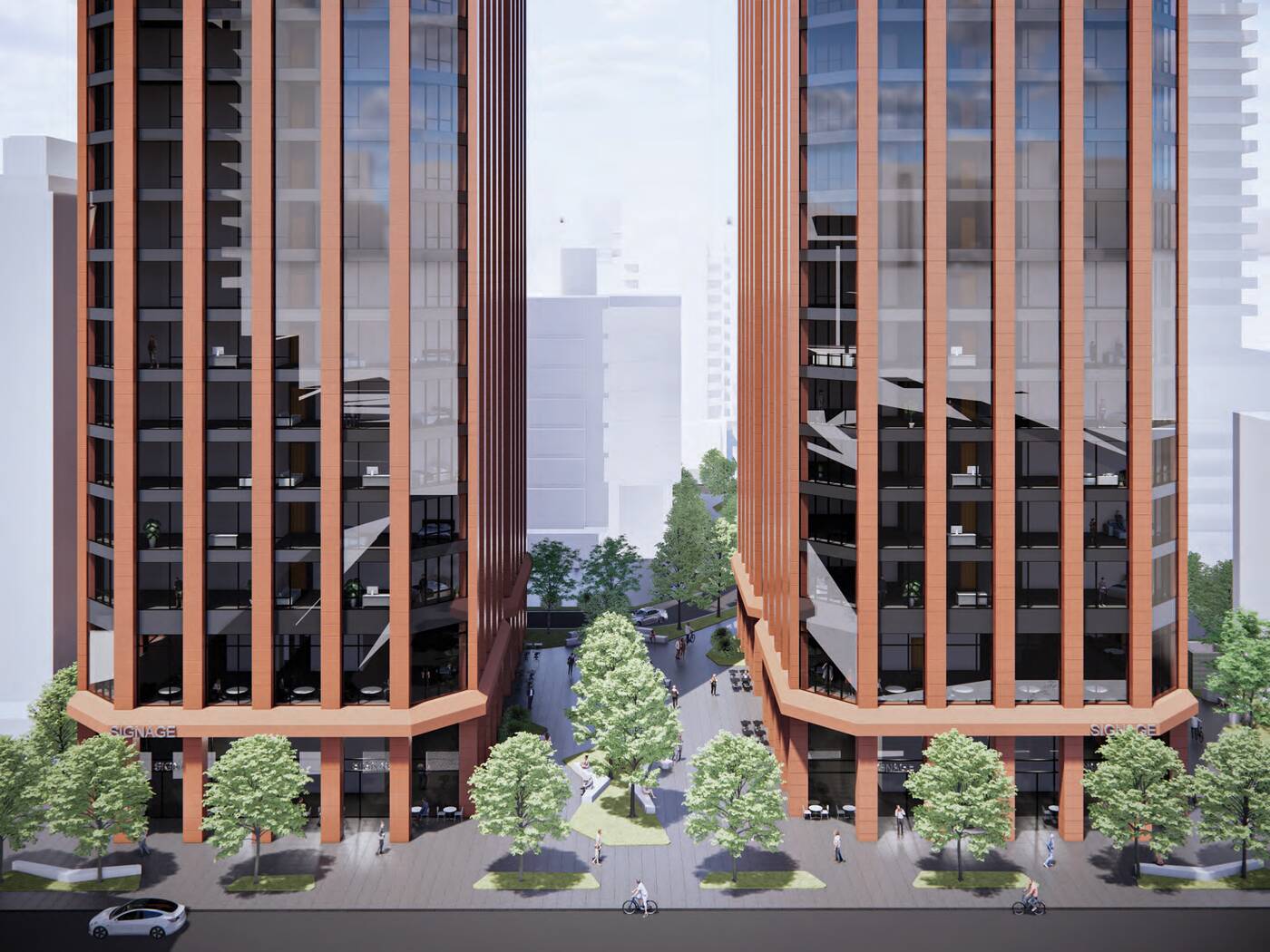

150 Eglinton East
The 58-storey towers at 110 Eglinton East will be linked via an enormous floating bridge spanning levels five through 10, framing a large open public space below and supporting an elevated residential amenity floor above.
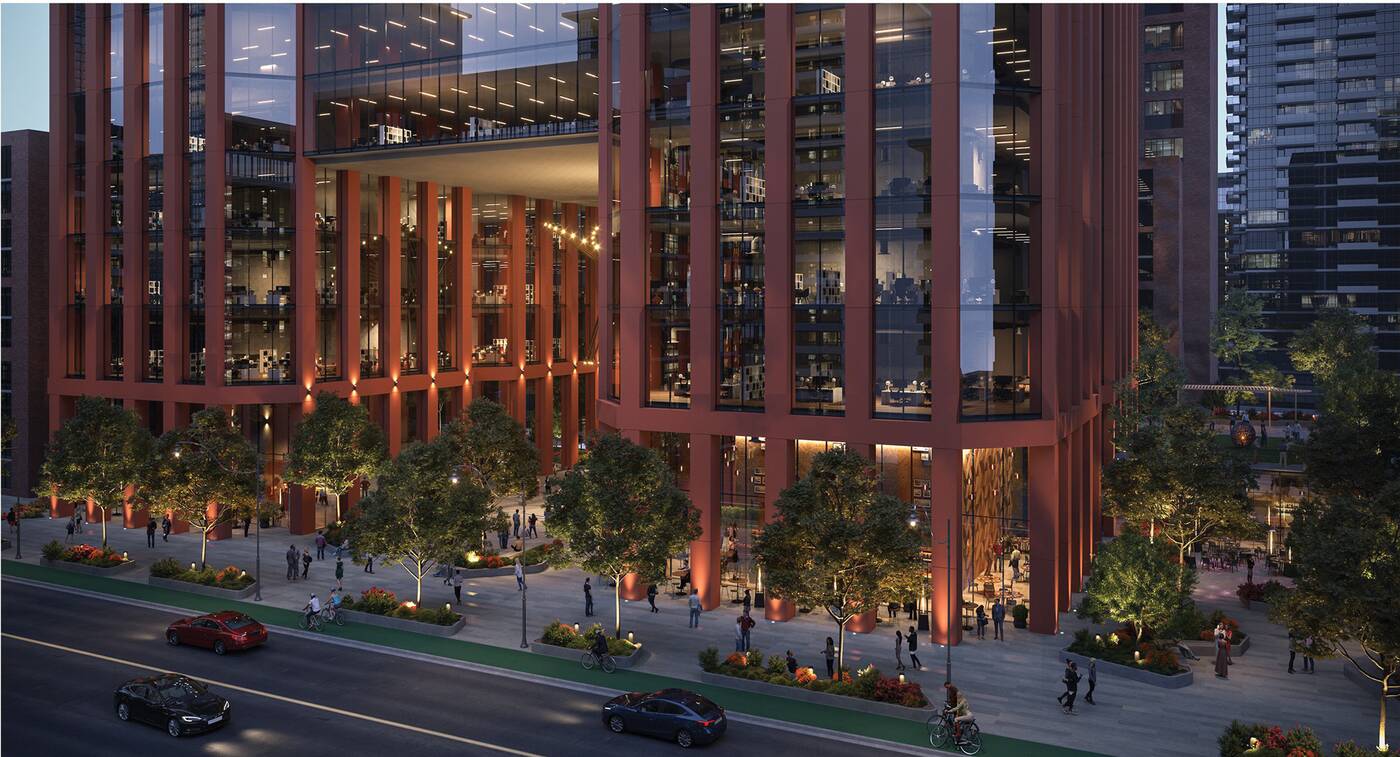

The 61-storey towers lack a skybridge, but will also feature amenity levels with panoramic views, including spaces on the 28th and 40th floors.
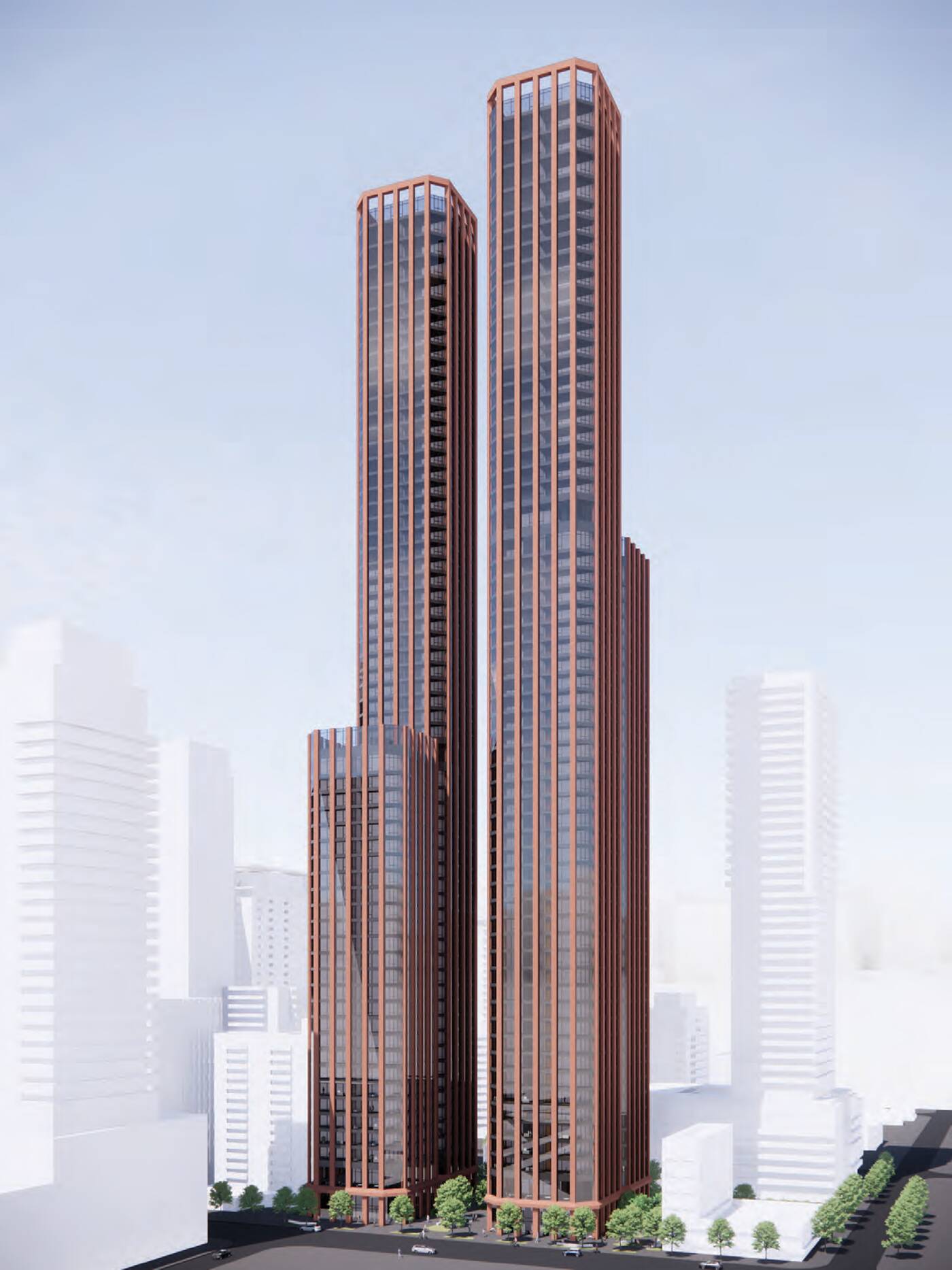

At heights of just over 236 metres, these four towers all stand taller than anything that exists in the neighbourhood as of 2024.
The combined proposals would add a staggering 3,364 condominium units to the neighbourhood, along with new retail and office space to maintain employment uses along this evolving corridor.
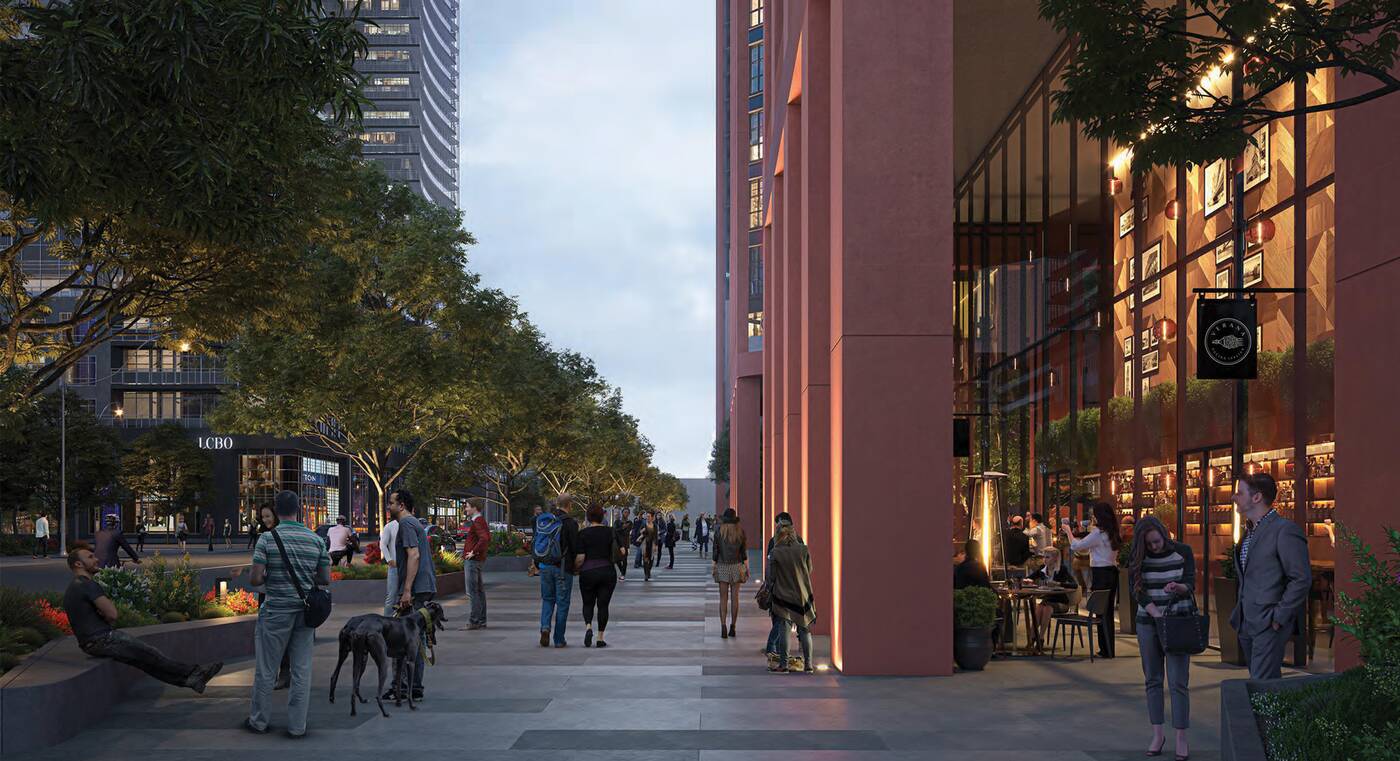

One standout of the proposals is a series of privately-owned publicly accessible spaces measuring over 5,000 square metres across the combined sites.
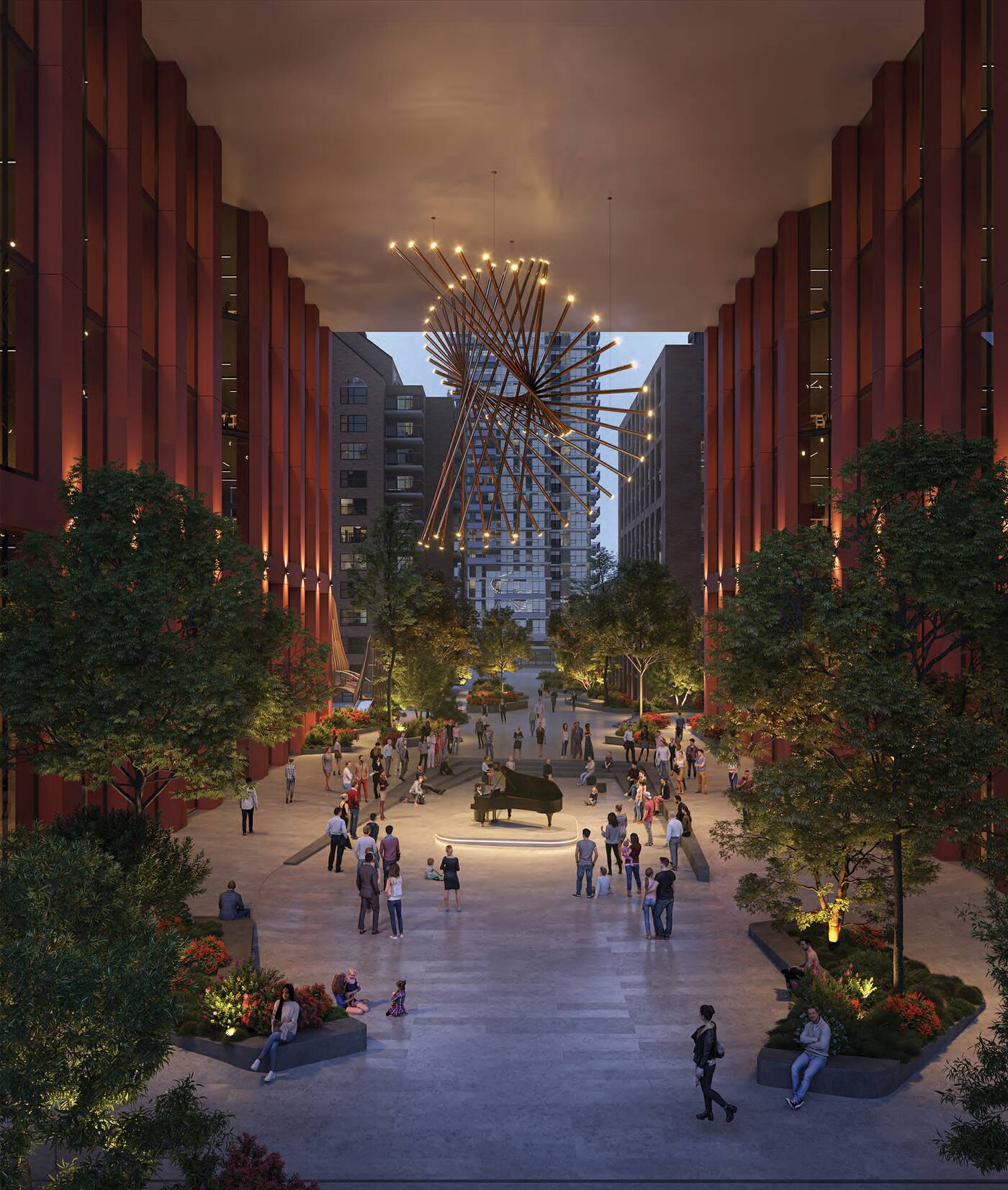

Among the publicly-accessible spaces proposed are the aforementioned area below the bridge at 110 Eglinton, along with pedestrian walkways that will allow foot traffic to filter through the block between Eglinton and Roehampton Avenue to the north.
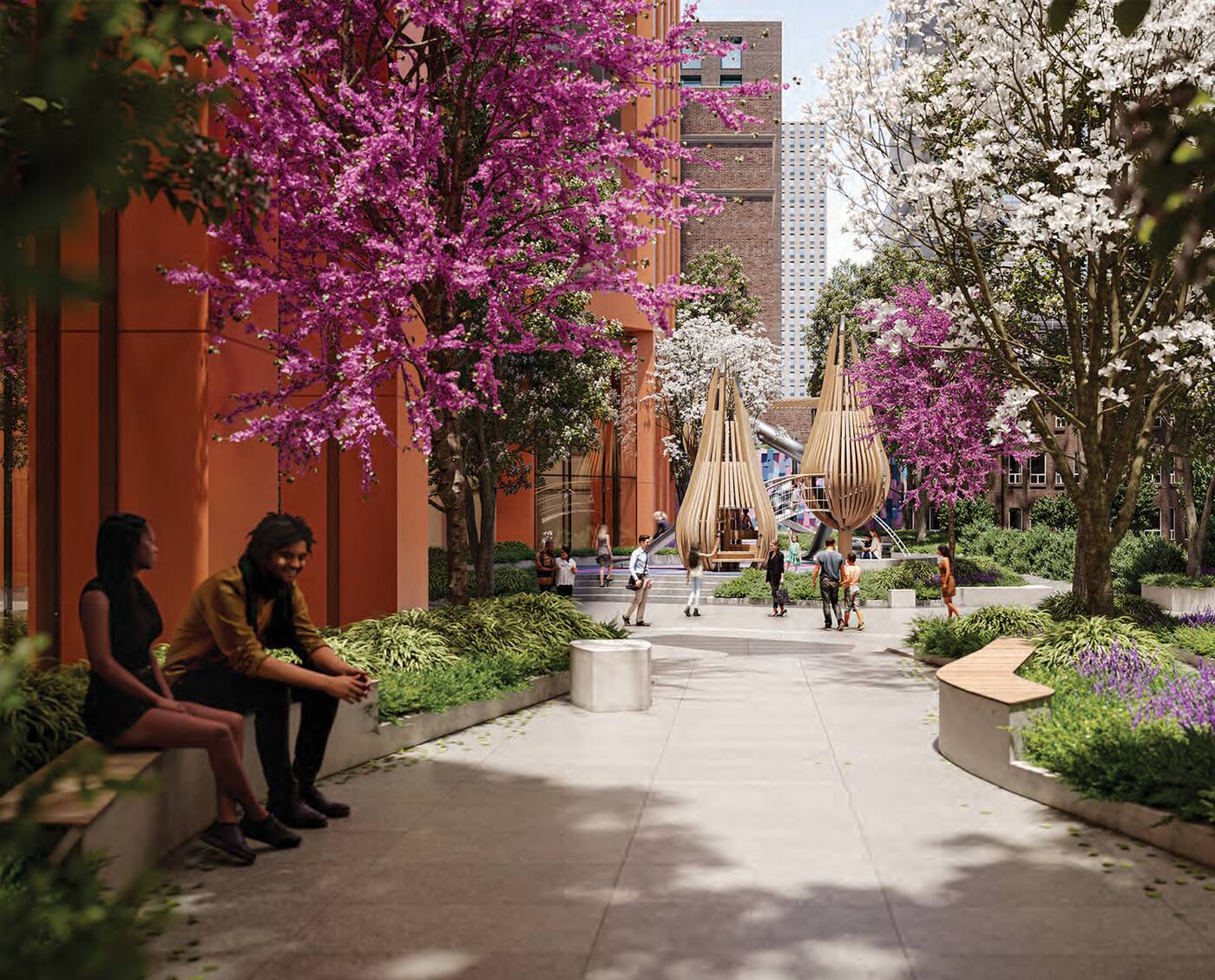

It’s the type of proposal one would expect to be met with significant local backlash. However, early feedback from the neighbourhood is surprisingly positive.
Local city councillor Josh Matlow took to X to voice his support for the project, calling it “genuinely exciting.”
“The architecture is beautifully designed,” said Matlow, hyping up locals with a promise that renderings of the new public space would wow the community. It’s remarkable for our community and city — like bringing Rockefeller Center to midtown Toronto,” said Matlow.





Real eState
This Toronto home is a ’90s decor trip but a steal at only $600K
|
|
If you’re a millennial and grew up in the ’90s, you’ll probably remember a fair amount of ’90s home decor trends that might still haunt you to this day.
There were sponge-painted walls, all-beige everything, wallpaper borders, oak cabinets, carpets in places where there shouldn’t be carpets, bedroom sets from big-box stores, Southwestern or Tuscan decor in homes that weren’t in Arizona or Italy, and the list goes on.
We thought we’d left those troubling times in the past, but 39 Hatherley Rd. really brings back all those memories.
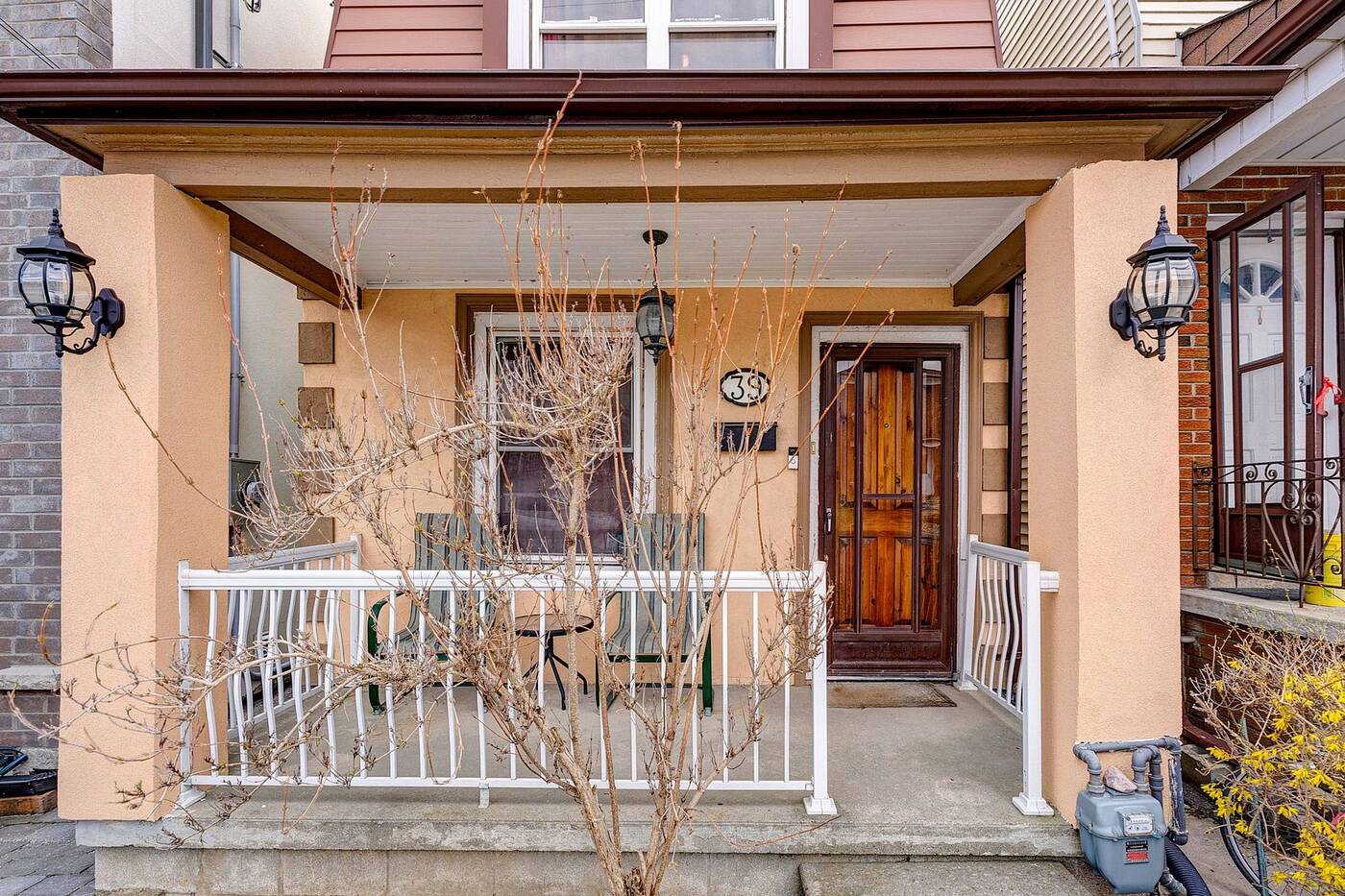

The front porch.
Somehow this two-bedroom, one-bathroom house hit almost every ’90s trend, except for carpets in the bathroom (phew!).
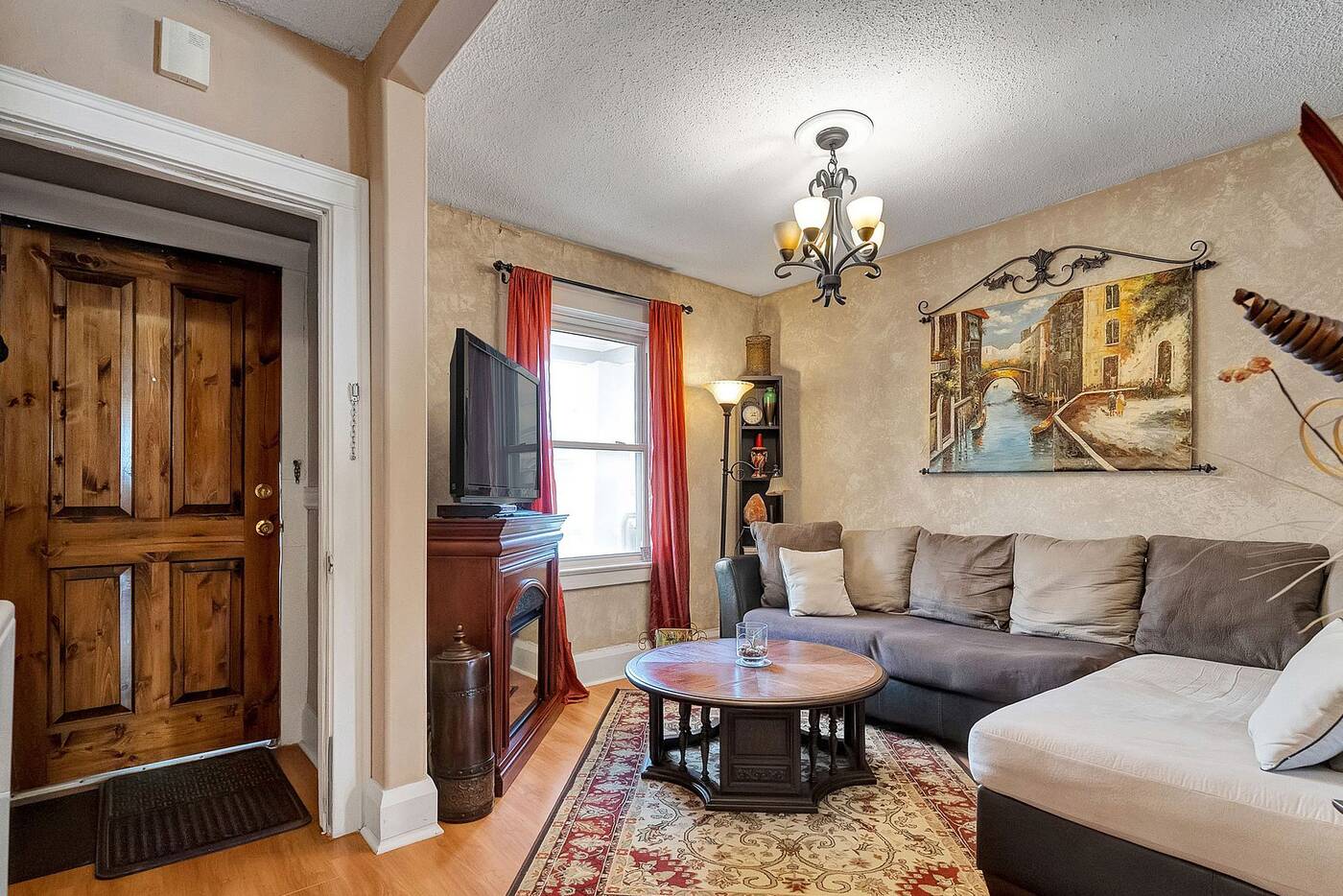

The entryway.
What’s weird is this house has changed ownership a few times since the 90s. In fact, it was most recently purchased in 2010 for $250,000.
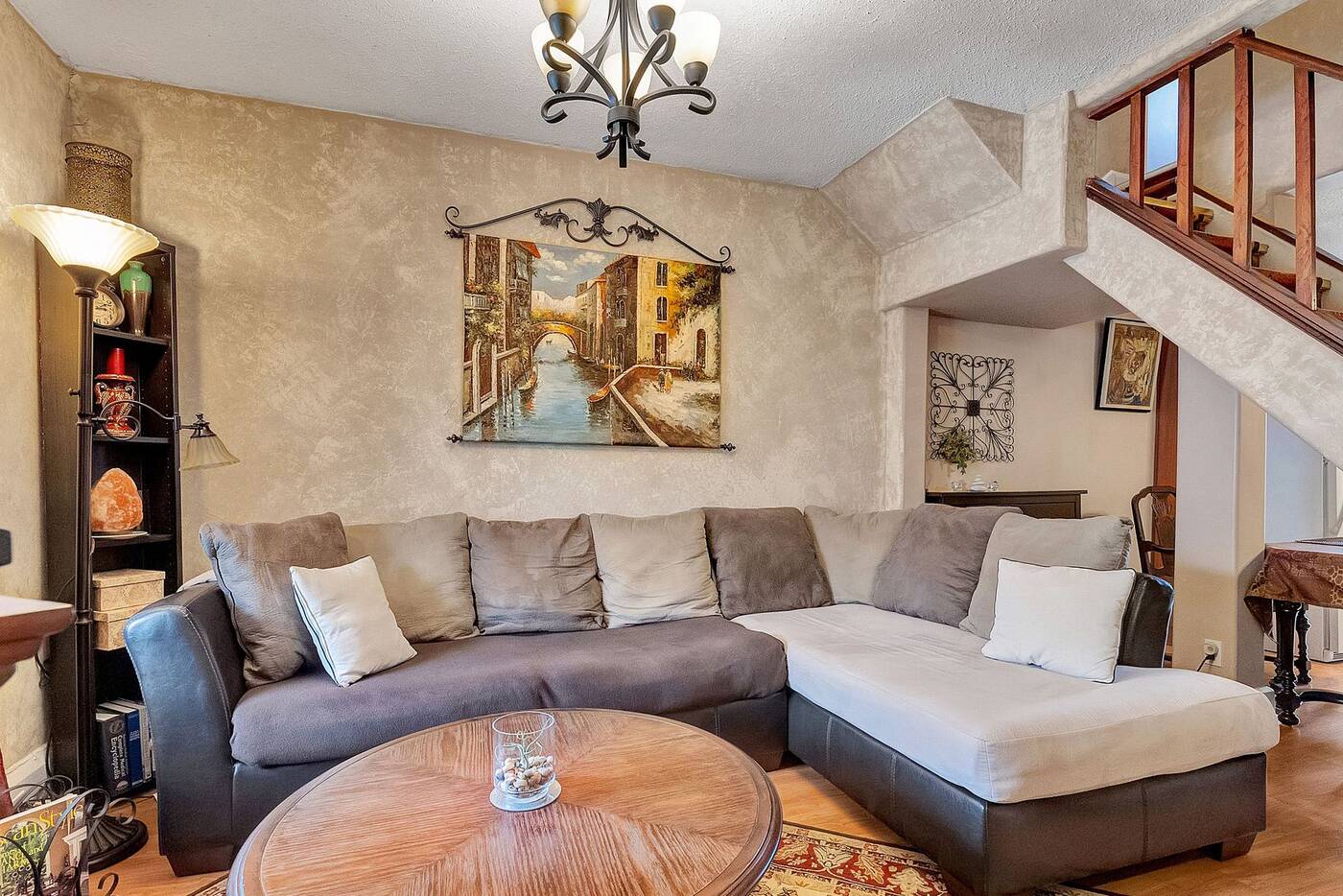

The living room.
So it’s somewhat surprising that when you look at past listing photos, almost nothing has changed. In fact, it seems they added the sponge-painted walls in 2010.
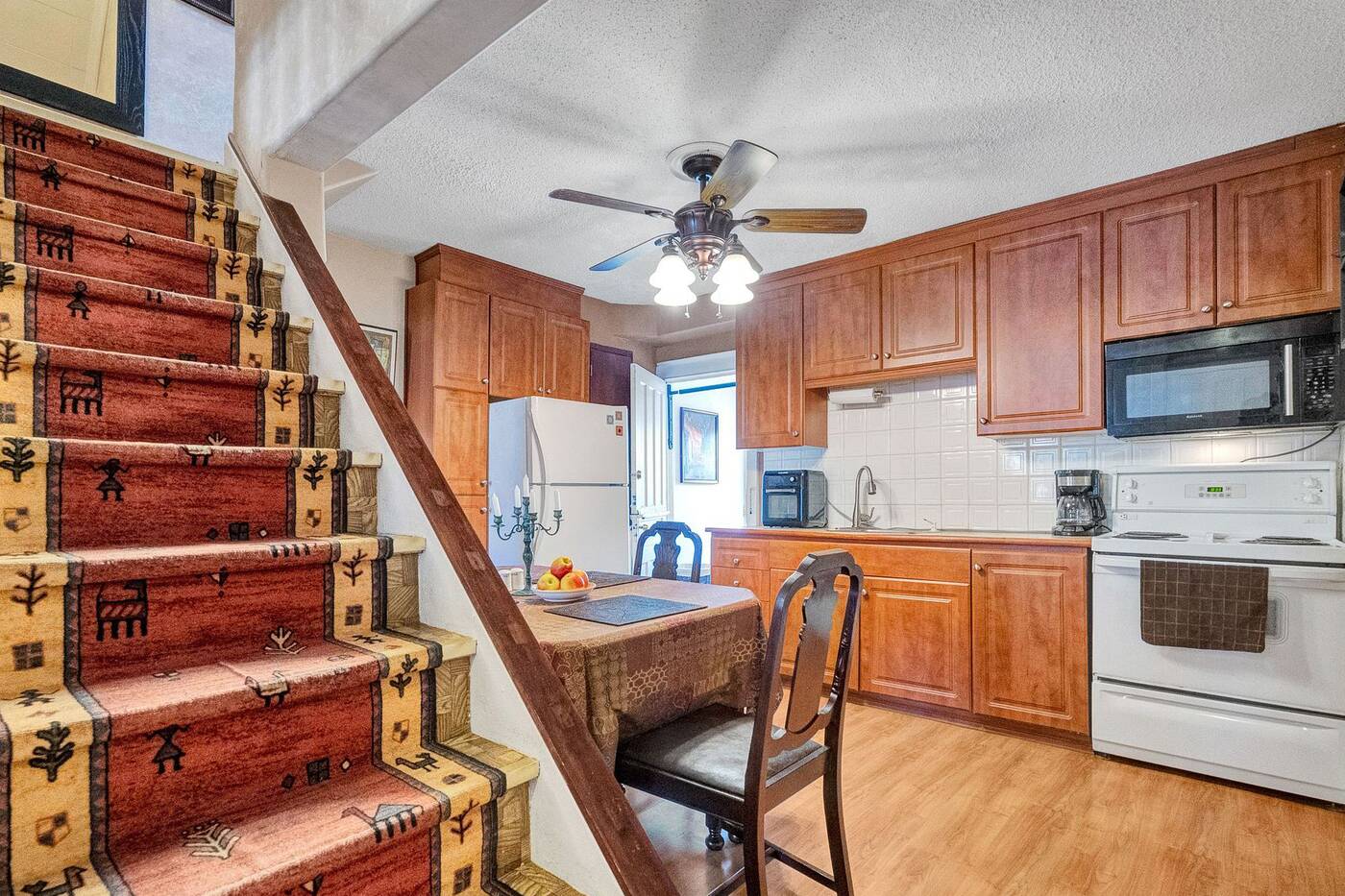

The kitchen.
But despite 39 Hartherley Rd. being a total throwback, this house is, as the listing says, “a diamond in the rough.”
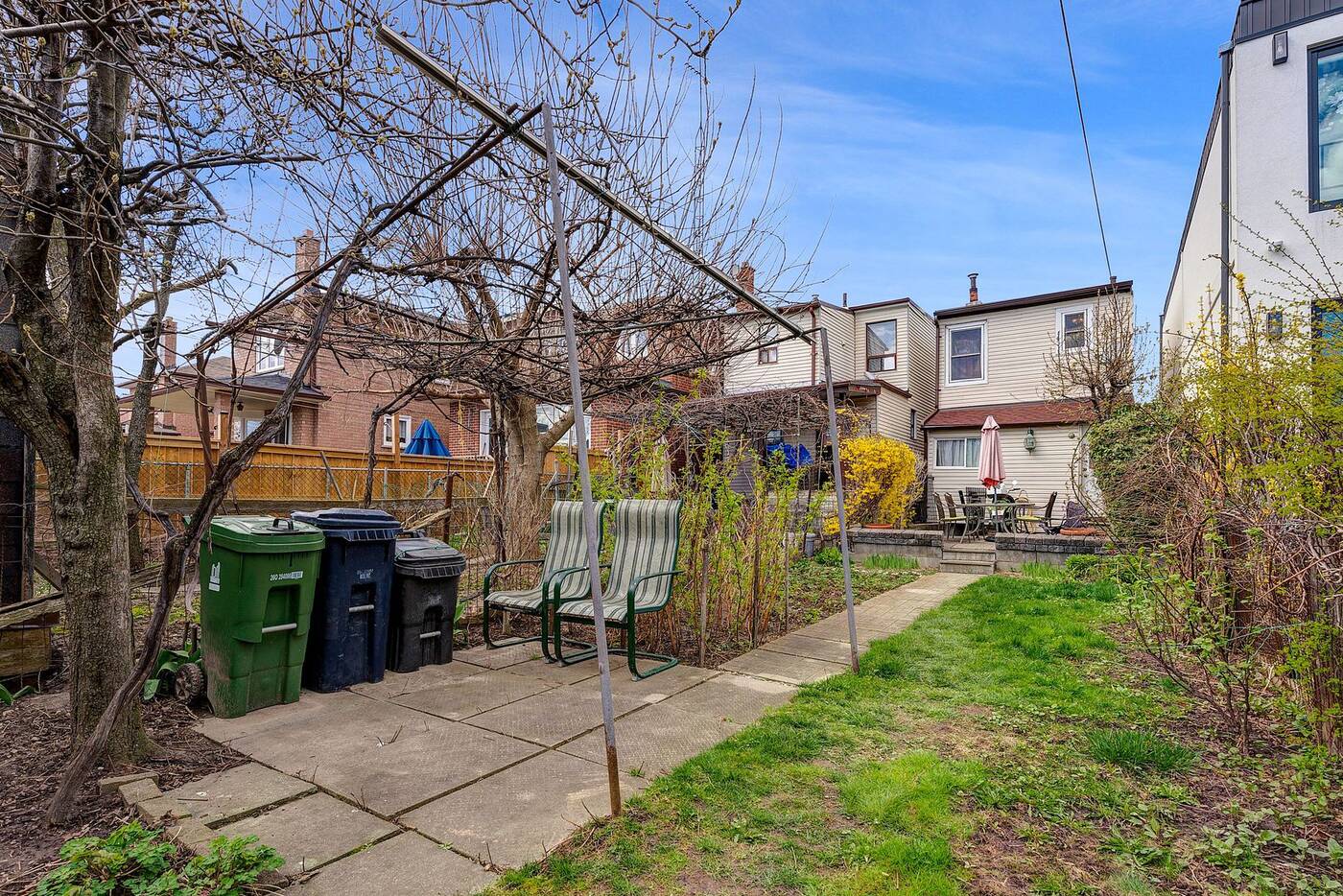

The backyard.
First off, it’s a detached house with a 125-foot deep lot in a good location.
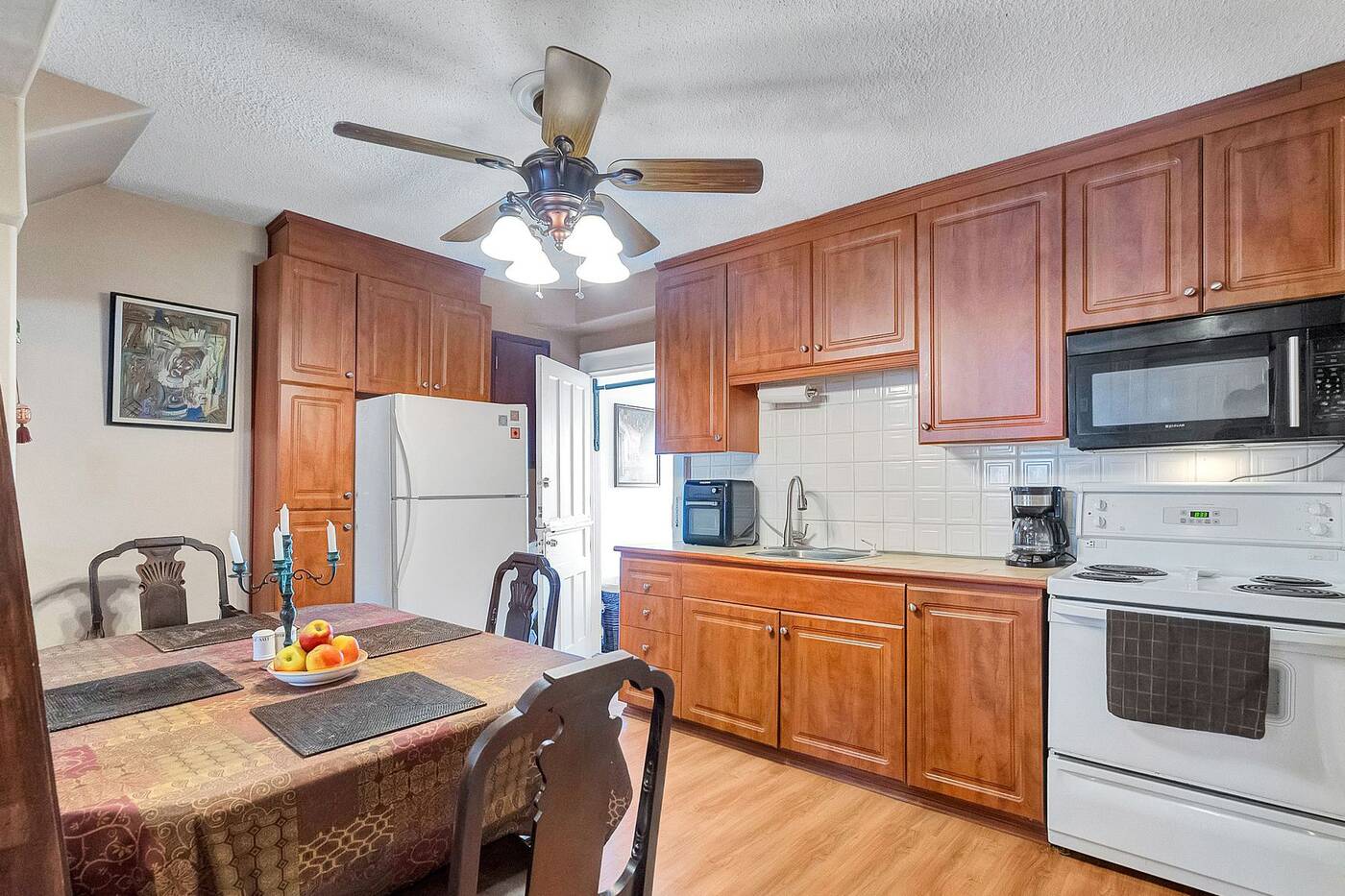

The kitchen has plenty of storage but, sadly, no dishwasher.
The main floor has a living room and kitchen with enough space for a dining table.
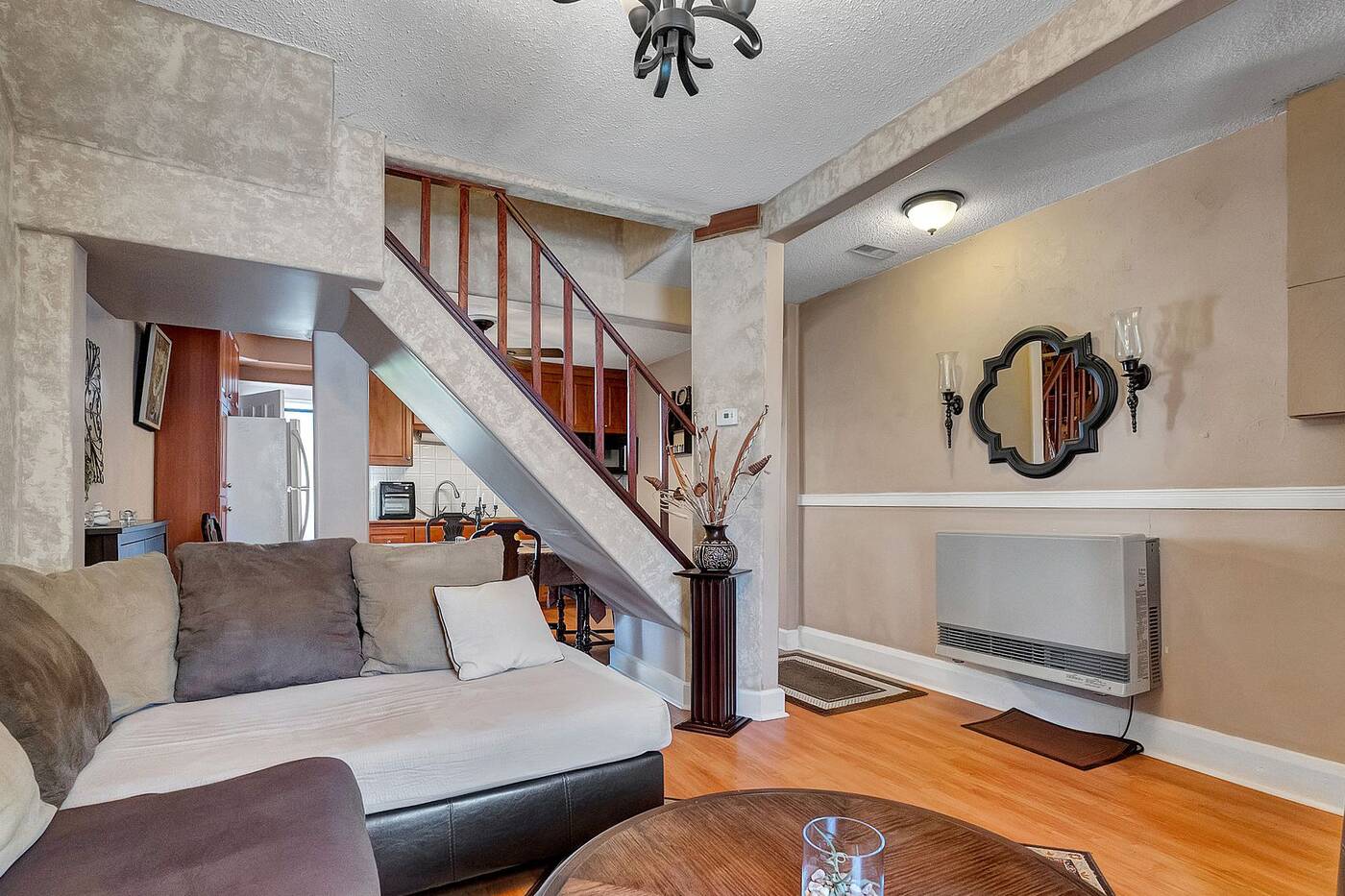

The main floor.
The layout is a bit awkward but the Dutch door off the kitchen is too cute.
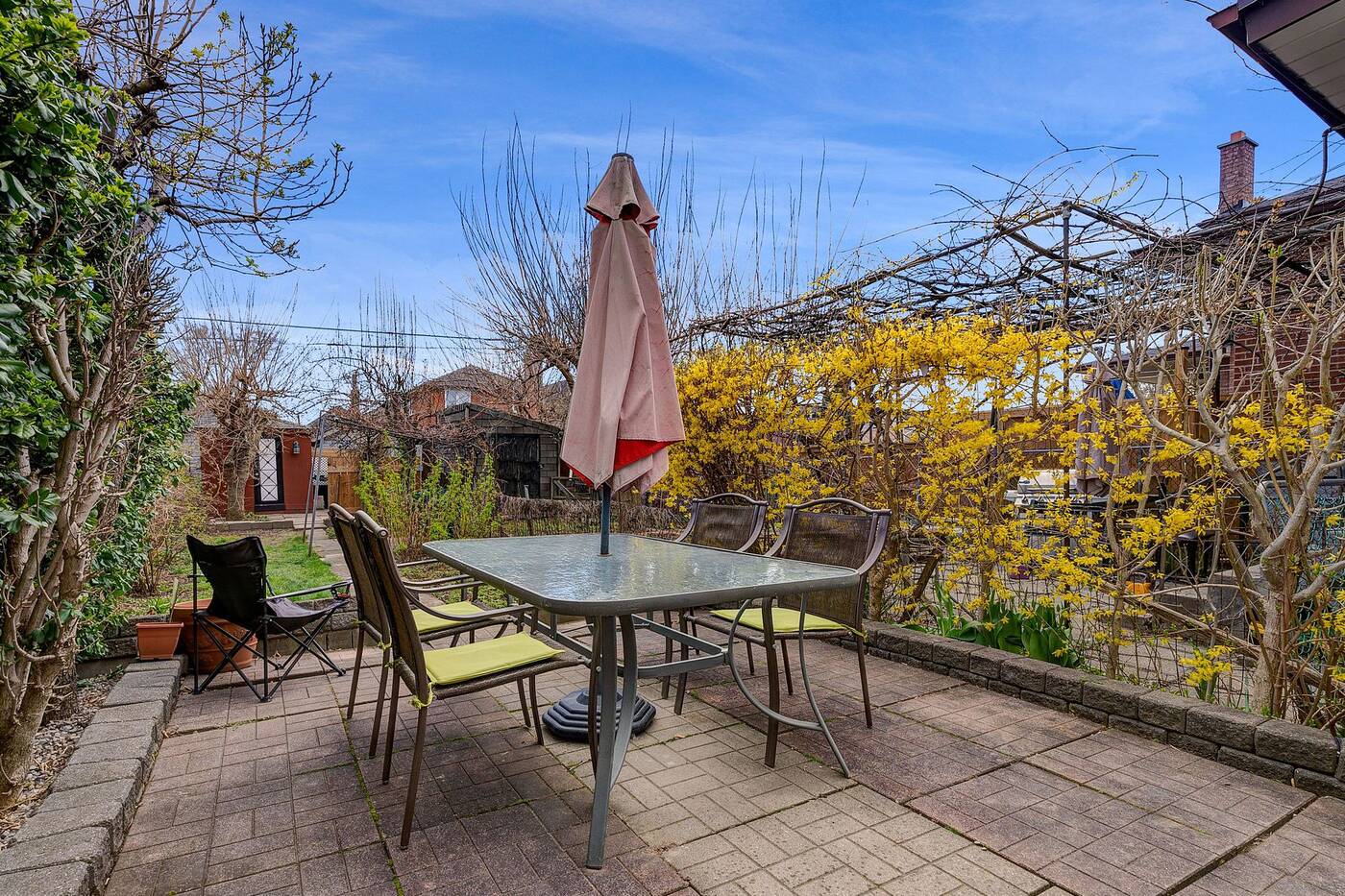

The back patio.
Off the kitchen is a laundry room/mud room that leads to the spacious backyard.
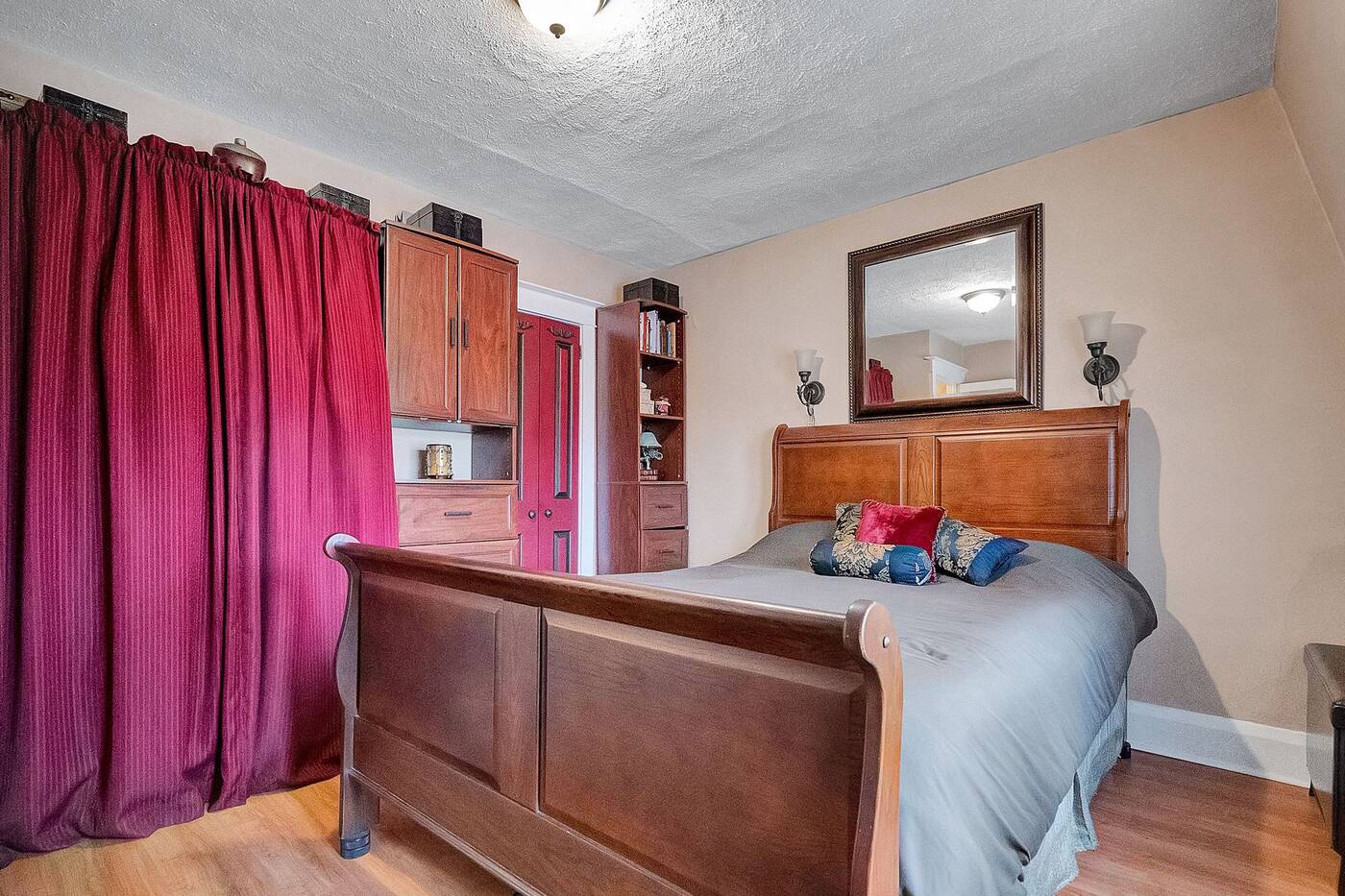

The primary bedroom.
Upstairs, there are two decently sized rooms and a small bathroom.
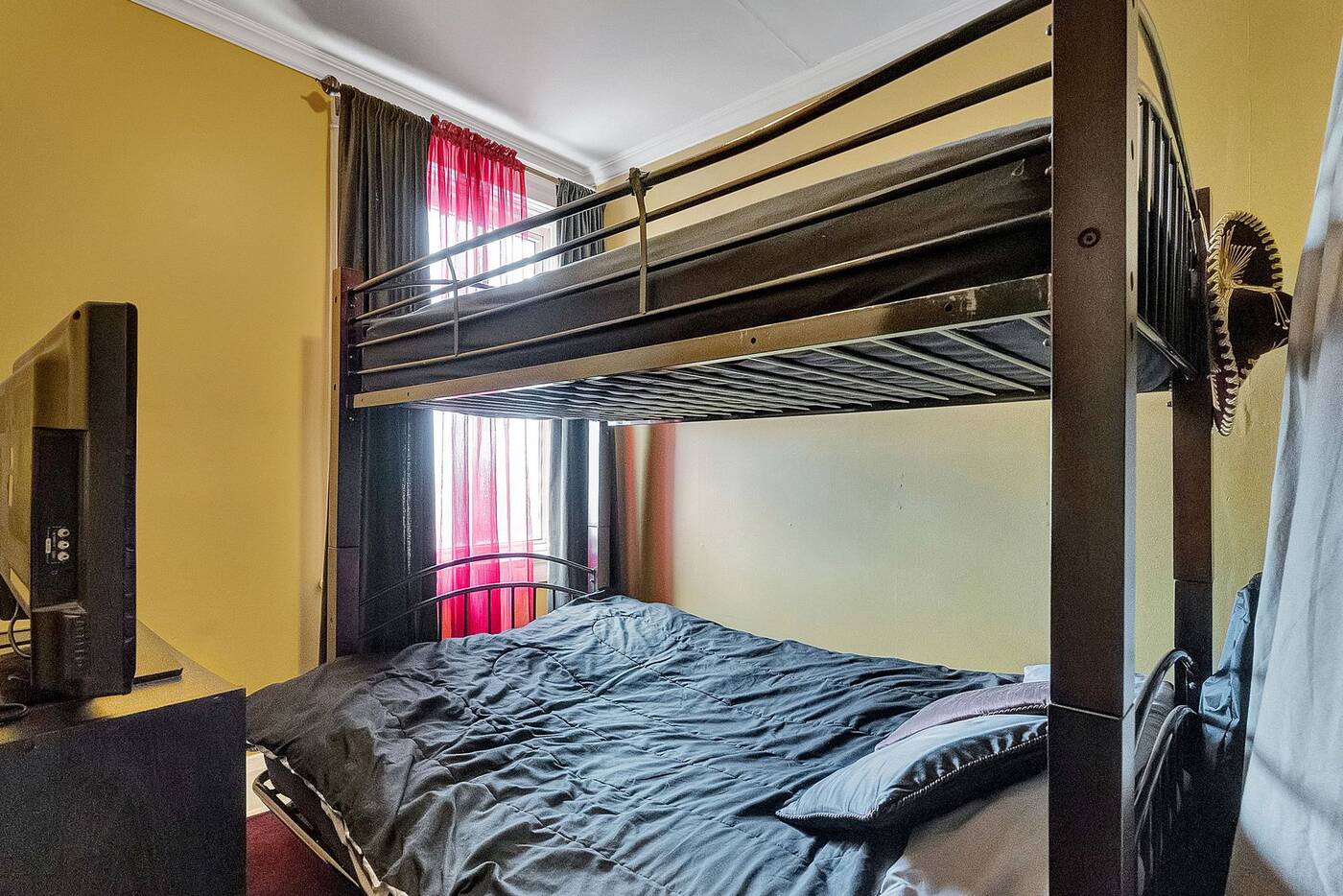

The second bedroom.
The house definitely needs some updating but the roof was done in 2015, the furnace is only a few years old, the electrical has been updated, and there’s room for expansion.
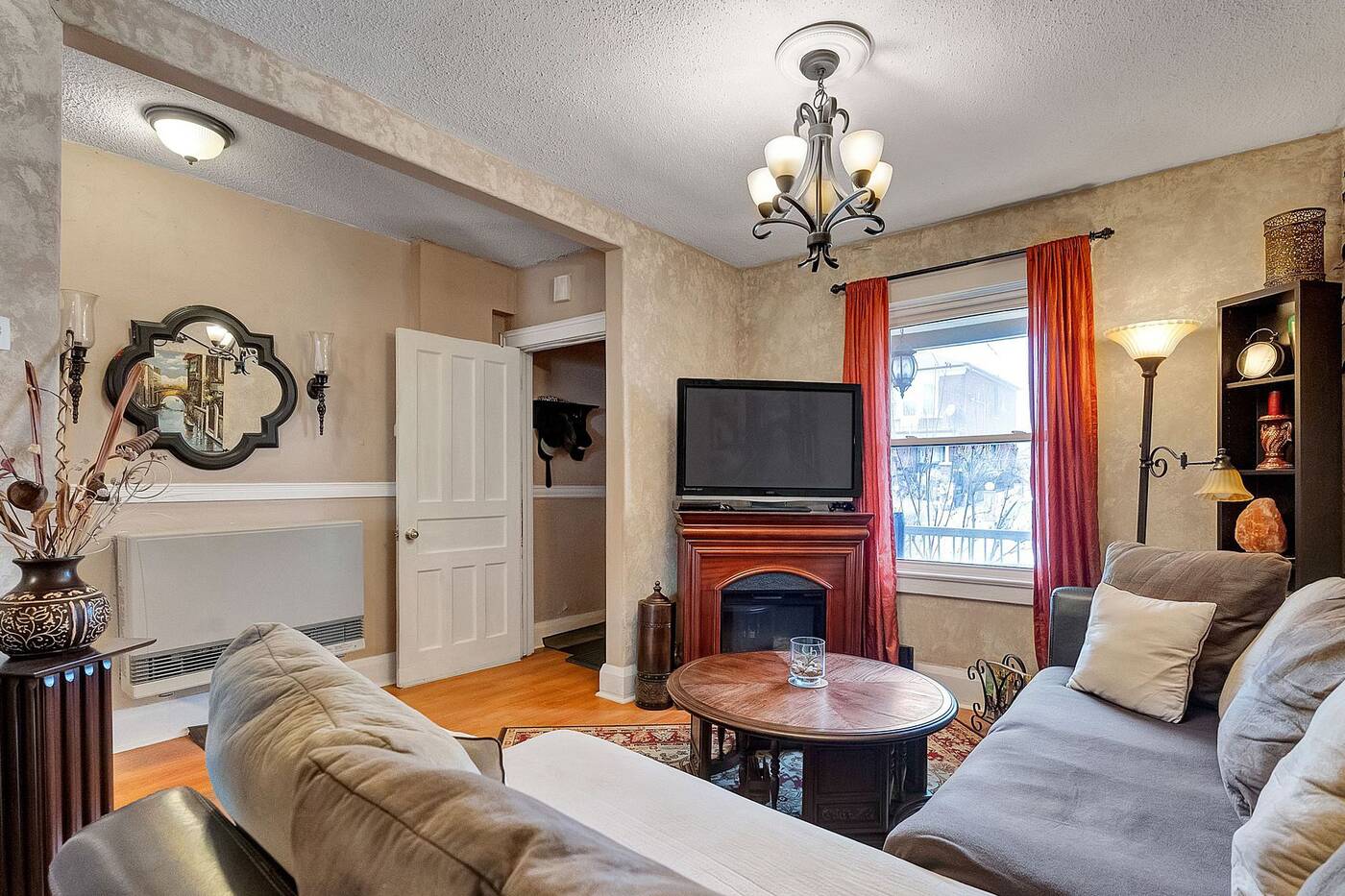

A fireplace in the living room.
Also, a coat of paint will do wonders to brighten up the all-beige ’90s aesthetic.
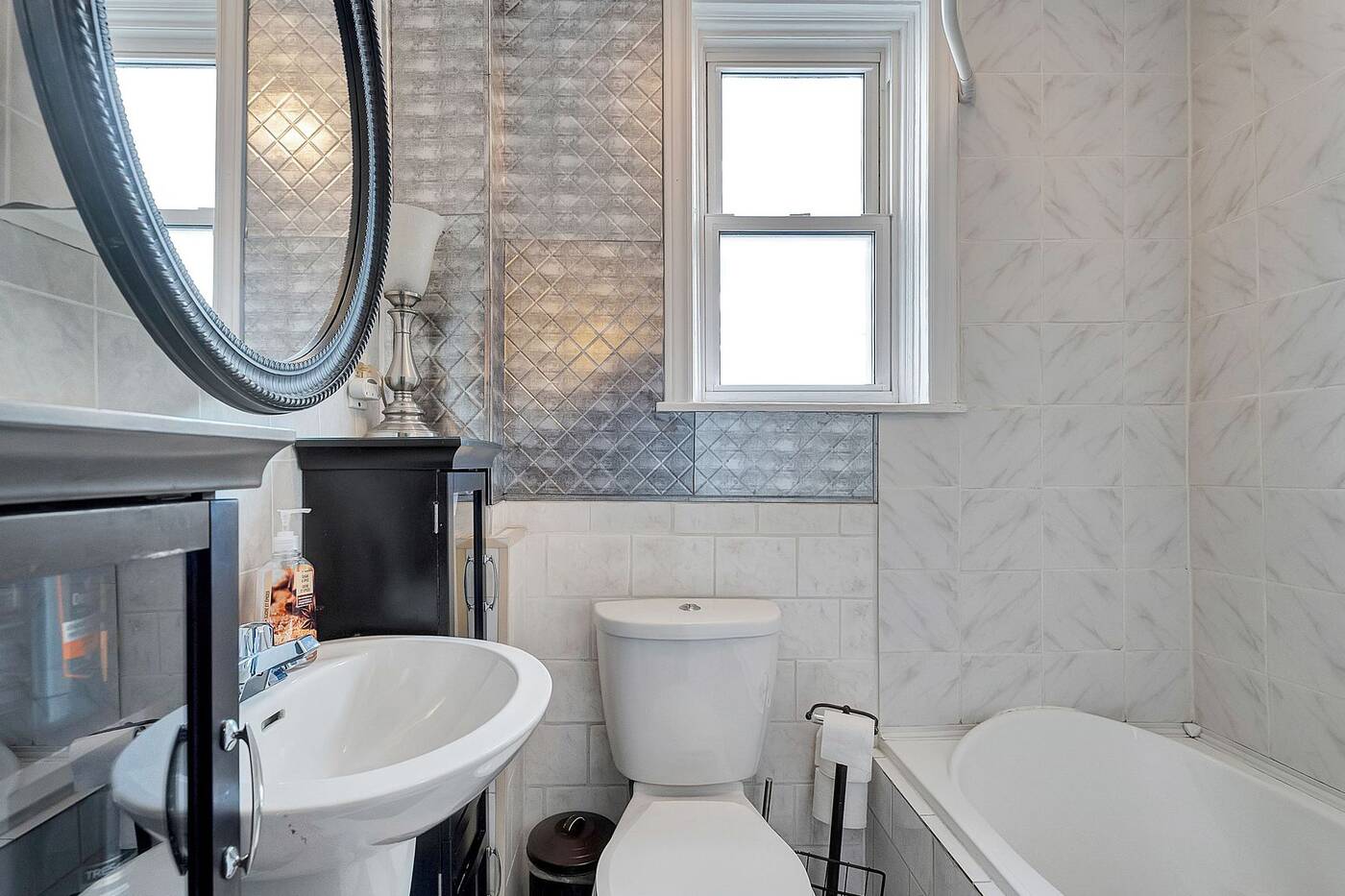

The small bathroom.
However, the biggest selling point of this home is the price point.
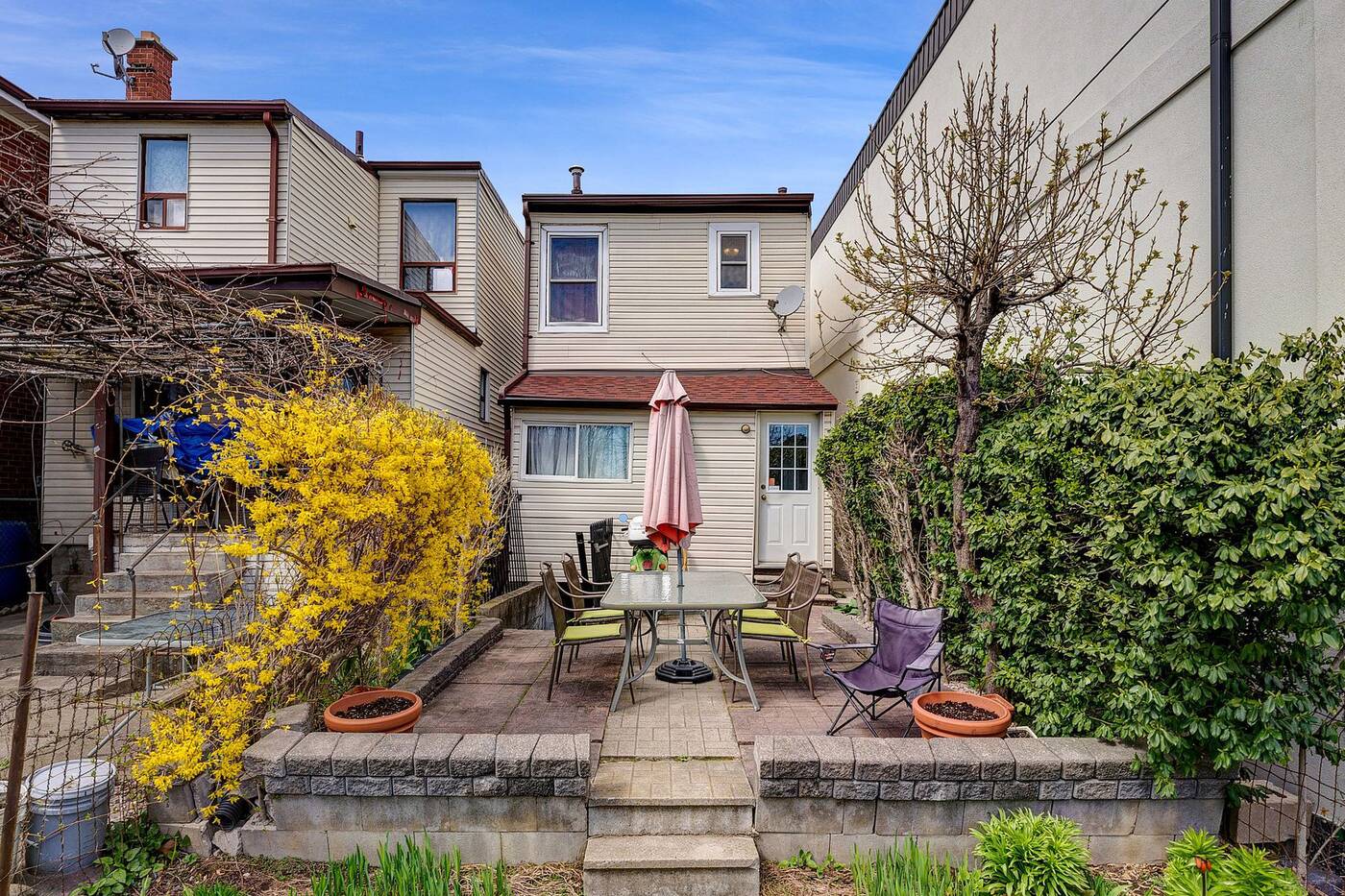

The back of the house.
39 Hatherley Rd. is listed for only $599,999, which is almost unheard of in Toronto, even if this place will probably go for closer to $700K.





-



 Health17 hours ago
Health17 hours agoRemnants of bird flu virus found in pasteurized milk, FDA says
-
Art23 hours ago
Mayor's youth advisory council seeks submissions for art gala – SooToday
-



 Health21 hours ago
Health21 hours agoBird flu virus found in grocery milk as officials say supply still safe
-
Art18 hours ago
Random: We’re In Awe of Metaphor: ReFantazio’s Box Art
-
News14 hours ago
Amid concerns over ‘collateral damage’ Trudeau, Freeland defend capital gains tax change
-



 Investment22 hours ago
Investment22 hours agoTaxes should not wag the tail of the investment dog, but that’s what Trudeau wants
-
News22 hours ago
Peel police chief met Sri Lankan officer a court says ‘participated’ in torture – Global News
-
Art23 hours ago
An exhibition with a cause: Montreal's 'Art by the Water' celebrates 15 years – CityNews Montreal




